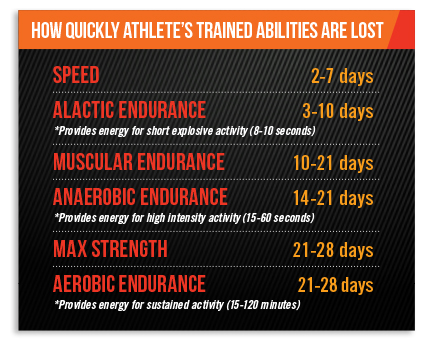Sports are looking significantly different in 2020. With the unexpected and sudden stop of leagues and school activities, athletes have not had adequate opportunities to practice and train at their previous level. Such extended time off can affect an athlete’s performance and conditioning, leaving many to fall behind on their athletic goals and previous progress — what we refer to as detraining.
The Dangers Of Detraining
When athletes are in a normal training routine, they are primed to improve their fitness, agility, strength, and tissue resilience. The increase of stress on the body during consistent training causes the body to adapt and improve. When this intentional stress is reduced – as it has been since March of 2020 – the body will also adapt backwards to a lower level in fitness ability.
Detraining Can Cause a Loss In:
- Aerobic Endurance
- Strength Endurance
- Anaerobic Endurance
- Alactic Endurance
- Speed
- Injury Protection
As restrictions are slowly being lifted, it’s important to acknowledge that training cannot simply pick up where it left off. If athletes jump right back into their training at the same level as pre-lockdown, they are setting themselves up for potential injury.
What Can You Do?
As athletes start returning to the training field, it’s essential to gradually build their strength and endurance back up. We’ve compiled a list of guidelines that will ensure the safety and preparedness of your athletes. This guide covers:
- Establishing a foundation and set of goals
- Creating a personalized training regimen
- Managing a sustainable training program to ensure your athlete is prepared for the return of sports
Download our Return to Sports Guide to ensure your athletes’ return is safe AND successful!
